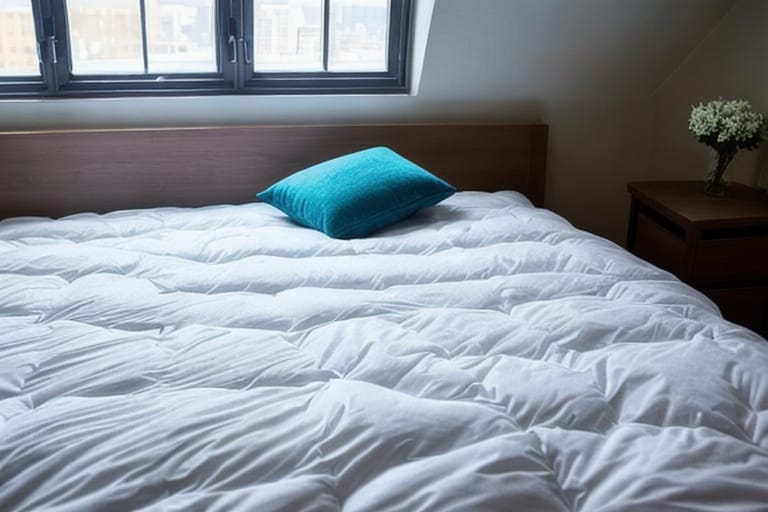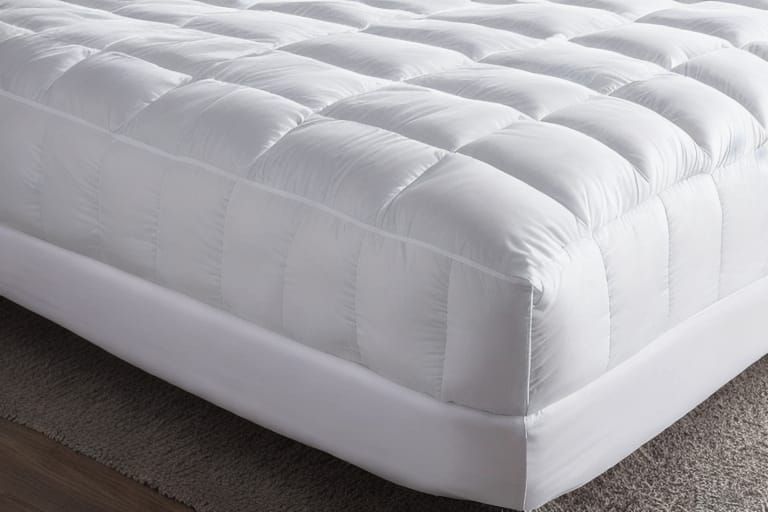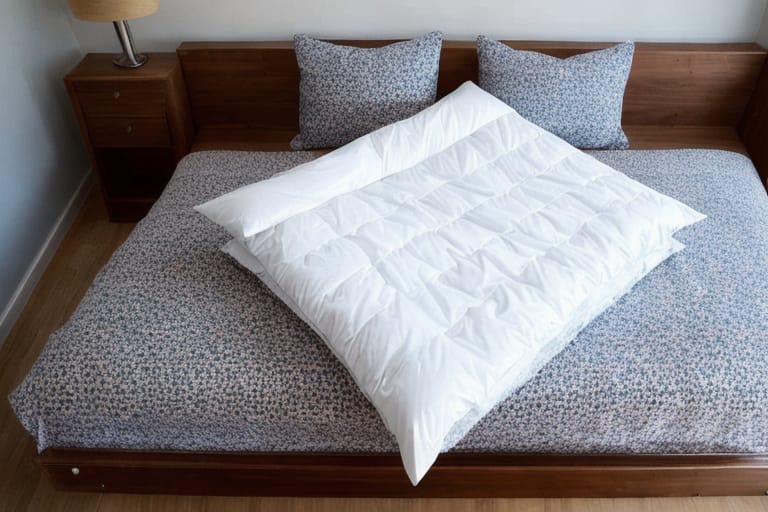Down comforters are a popular type of bedding valued for their lightweight warmth and plush comfort. But with so many options on the market, it can be hard to know which ones live up to their promises. As a widely available and affordable brand, Ikea is on many shoppers’ radars when mattress shopping. But how do Ikea’s down comforters stack up?
This beginner’s guide will explore Ikea’s range of down comforters, assessing their quality, warmth, comfort and value to help you determine if their bedding is worth buying. We’ll also provide expert opinions and buying recommendations to further aid your decision.
What is a Down Comforter?
Before assessing Ikea’s offerings specifically, let’s review what exactly down comforters are and what makes them so popular.
Overview and Function
A down comforter is a type of duvet or quilt that is filled with down feathers sourced from ducks or geese. The ultra-fine feathers create thermal insulation that traps body heat, keeping you warm at night.
Compared to alternatives like polyester or cotton comforters, true down is highly valued for:
- Warmth – Superior at retaining heat thanks to clusters trapping air
- Softness – Light and fluffy with a pillowy texture
- Breathability – Allows moisture and heat to pass through preventing overheating
- Durability – Can maintain loft and insulation for many years with proper care
Types of Down
Not all down is made equal. Fill power measures the loft and insulation quality of down feathers. Most comforters range from 300 to 900 fill power. Generally, higher fill power means better insulation and durability.
There are also different types of premium down:
- Goose Down – More abundant and affordable option sourced from mature geese. Dense and durable.
- Duck Down – Softer and lighter but less warm than goose. Ideal for warmer climates or lightweight comforters.
- Hungarian Goose Down – Considered the highest quality, these large Hungarians geese yield superior feathers. But costs more.
Evaluating Ikea Down Comforters
Now that you know what defines a quality down comforter, let’s explore Ikea’s range against those metrics.
Ikea’s Bedding Lineup
As one of the world’s largest furniture retailers, Ikea has a vast selection of home goods from decor to bedding. Their range of quilts, pillows, mattresses and more are designed in-house and contract manufactured to keep costs low.
They offer down comforters to suit beds of all sizes, in weights ideal for different seasons:
- RUPSULA – Lightweight, all-season comforter
- HOVAG – Medium warmth comforter
- SINNLIG – Heavier, winter warmth comforter
Prices range from $70 up to $279 depending on size, warmth rating, and shell fabric.
Fill Power and Materials
The majority of Ikea down comforters have a fill power between 600 to 650. This puts them in the medium quality range – decent insulation without the high cost of premium 700-900 fill power down.
The outer shell fabrics are also mid-tier in terms of quality. Mostly cotton shells with the higher end SINNLIG line using Egyptian cotton.
For budget-focused shoppers, this balance of modest fill power and shell fabrics helps keep costs affordable while still adding warmth and softness to the bed. Those wanting ultra-plush down may be disappointed.
Warmth and Breathability
How well do Ikea’s mid-fill power down comforters regulate temperature for year-round use?
Here is how their warmth ratings breakdown by season:
- RUPSULA – This lightweight comforter provides extra warmth for Summer or on its own in Spring and Fall. Great for those who sleep hot or live in warmer climates.
- HOVAG – With a bit more insulation, this medium option balances lightweight comfort for 3 seasonal use. Best for Spring through Fall in colder regions.
- SINNLIG – The highest warmth rating designed for cold Winter nights. Can feel overly hot for some users during warmer months.
In customer reviews, most describe their Ikea down comforter as maintaining a comfortable sleeping climate without excessive sweating or overheating. The breathable down allows body heat and moisture to pass through the fibres rather than trapping it.
Quality and Durability
Beyond warmth and comfort, shoppers also care about overall durability. Will an Ikea down comforter lose its shape or fall apart after a few years?
Materials and Construction
The shell fabric plays a key role in the comforter’s longevity. Cheaper cotton can pill or tear over time. But Ikea’s mid-tier cotton fabrics offer decent resilience.
For construction, their down comforters feature baffle box stitching which helps the filling stay evenly distributed instead of clumping in one area. This leads to better consistency in warmth and support.
Some users note feathers poking through the outer shell after a few seasons. Choosing a higher thread count cover can mitigate this issue.
User Reviews Over Time
Checking longer term reviews indicates most Ikea down comforters maintain their shape and warmth for at least 2 to 5 years. Positive feedback on durability includes:
- “Purchased my HOVAG comforter 2 years ago and it’s held up perfectly even after many washes.”
- “Have had my SINNLIG for 3 years now with no issues. As warm and fluffy as the first night I got it!”
- “Bought the RUPSULA down comforter when I first furnished my apartment 5 years ago. Still keeps me cozy each night.”
While a small percentage of reviewers experience issues like flattened spots, poking feathers or ripped seams after 1-2 years, the majority are pleased with the lifespan.

How Do Ikea Down Comforters Compare?
Before deciding if an Ikea down comforter fits your needs and budget, it helps to see how they stack up to other options.
Price and Value
Here is a pricing comparison of Queen size down comforters across brands:
| Brand | Prices |
|---|---|
| IKEA | $100 – $279 |
| Pottery Barn | $220 – $500 |
| Brooklinen | $249 – $349 |
| Buffy | $170 – $259 |
| The Company Store | $270 – $440 |
Within the mid-budget range, Ikea comforters offer competitive value. More premium options with 700+ fill power down, specialty fabrics, and artisan construction can demand prices from $500 up to $1,200+.
Unique Selling Points?
While not matching the luxury features of pricier artisan brands, Ikea does differentiate with:
- Wide range – From lightweight to ultra-warm comforters suiting all seasons and needs
- Ease of care – Machine washable for easier cleaning than dry-clean only
- Child/teen-friendly – Fun, approachable prints for kids’ rooms unlike more sophisticated looks
- Sustainably sourced – 70% responsibly sourced down promising humane practices
So families on a budget can enjoy quality, ethically-made bedding.
Concerns and FAQs
For some, doubts may linger about potential downsides to Ikea comforters. Let’s address the top issues.
Hypoallergenic and Allergy Concerns
Down bedding can trigger reactions for those sensitive or allergic to feather and dust particles. Ikea comforters are not alone certified hypoallergenic.
That said, many reviewers prone to allergies share positive experiences:
- “Usually down makes me stuffy and itchy. But no reaction after 30 nights on this Ikea comforter.”
- “Impressed that I’ve had no adverse effects as a lifelong allergy sufferer.”
The barriers of the cotton shell along with consistent washing appear sufficient for most. Those with severe allergies may prefer a synthetic hypoallergenic fill instead.
Cleaning and Care
To retain maximum loft and longevity with a down comforter, proper cleaning methods matter. Refer to the sewn-in label for each Ikea comforter’s recommended upkeep steps.
Things to note:
- Only gentle machine wash cycles on cold
- Avoid bleach or fabric softeners
- Large capacity machines needed to allow agitation
- Multiple rinse cycles to flush all detergent
- Low heat tumble dry with tennis balls
- Frequent air fluffs revitalize down clusters
With proper seasonal washings, you can enjoy an Ikea down comforter for many cozy nights of sleep.
Sourcing Ethics and Sustainability
For many buyers, environmental impact and ethical manufacturing are important factors to consider alongside quality and price.
Ikea’s Sustainability Goals
As the world’s largest furniture brand, Ikea holds substantial power to protect – or exploit – vulnerable workers, communities and habitats.
Recognizing this, in recent years Ikea set ambitious sustainability targets for 2020 and beyond spanning:
- Sourcing raw materials
- Production partners
- Reducing waste, energy and emissions
- Improving social impact
Specific commitments related to down bedding include:
- 100% traceable down to validate humane supply chains
- Responsible Down Standard (RDS) certification of suppliers – currently at 70% and climbing
Maintaining High Standards
While no company is perfect, Ikea shows real initiative to use its reach positively. As evidenced by consistent top rankings on corporate sustainability benchmarks, including:
- Dow Jones Sustainability Index – Industry group leader
- CDP Climate Change Program Ranking – A List
- World Benchmarking Alliance – #1 ranking Home Furnishing category
Do they still have work to do? Absolutely. But current efforts are steadily driving improvement.

Final Recommendations
As we wrap up this beginner’s guide on Ikea down comforters, here are our closing recommendations:
Who Should Buy an Ikea Down Comforter?
If you want a reasonably priced mid-quality down comforter, Ikea delivers compelling options ideal for:
- First apartments or budgets under $300
- Children’s rooms – fun colors!
- Guest bedrooms – affordable spare bedding
- Warm sleepers – breathable construction prevents sweating
- Shoppers valuing sustainability commitments
Top Rated Choices
Based on warmth, quality and value, Ikea’s best down comforters are:
- HOVAG – Best Overall Choice
- SINNLIG – Best for Winter Nights
- RUPSULA – Best Year-Round Lightweight
Final Thoughts
While not matching premium quality, Ikea’s mid-fill down comforters offer solid performance for the price. With options suiting most tastes and budgets, they remain competitive in the budget bedding category.
Focus on sustainable sourcing also helps them stand apart. For shoppers aligning value with ethics, Ikea comforters make a sensible choice.
Now weighed with the key facts and expert insights, you can decide if an Ikea down comforter deserves a spot on your bed this season.
Frequently Asked Questions
1. How do I choose the right fill power?
Ikea down comforters range from 600 to 650 fill power. This puts them in the mid-quality, mid-priced bracket. Those wanting ultra-plush 700-900 fill should look to premium brands but pay higher prices.
2. What about allergies?
Ikea down is not certified hypoallergenic so those with severe feather allergies should choose a synthetic fill instead. But many users prone to allergies share positive experiences thanks to the barrier of the cotton shell and consistent washing.
3. How do I clean my Ikea down comforter?
Refer to the sewn-in label for each comforter’s recommended cleaning methods. Most are machine washable on cold, gentle cycles. Use large capacity washers allowing loads to move freely and add tennis balls in the dryer to re-fluff.
4. How long will an Ikea down comforter last?
The average lifespan reported is 2 to 5 years with proper seasonal cleaning and care. Higher end options may last up to 10 years. For budget bedding, this represents decent durability.
5. Are Ikea down comforters ethically sourced?
Yes. Ikea has strong commitments to improve sustainability and traceability across their entire supply chain. 70% of down currently comes from Responsibly Sourced certified partners with a goal to hit 100%. Rivals still lag behind on ethical sourcing at scale.








